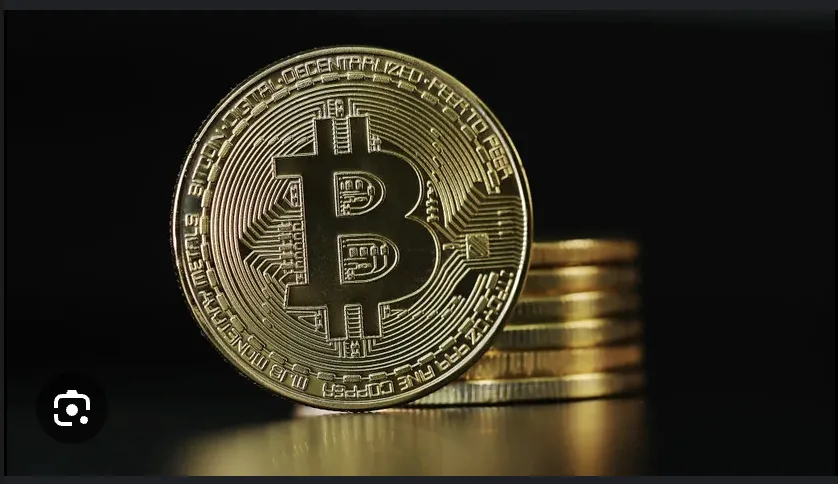Learning More about Bitcoin Price USD
In the current era, there are multiple people who claim Bitcoin as “digital gold,” and they’re not wrong. From centuries gold has been treasured because it’s scarce, valuable, and even trusted. People hold it during uncertain times because it feels solid. Bitcoin price USD plays a very similar role today — except it lives entirely online.
Here’s the cool part: gold is mined from the ground, but Bitcoin is mined using computers. The process is called Proof of Work. Instead of digging, machines solve complicated puzzles, and that’s how new Bitcoin enters the world.
Scarcity is what gives both gold and Bitcoin their strength. There’s only so much gold on Earth. And Bitcoin? No wonder it has a hard cap of 21 million coins. No one can make more. That limit gives it a kind of built-in value.
And unlike gold, you don’t need to move physical bars or rely on a vault. You can send Bitcoin anywhere in the world within minutes. No banks and no even middlemen. Peer-to-peer value transfer alone is significant in a world where gatekeepers handle the majority of financial transactions.
Bitcoin was created in 2009 — the first cryptocurrency ever. It inspired a wave of other projects like Ethereum, but it still stands out. It’s the largest by market value, the best known, and widely seen as the most secure. That’s thanks to its massive global network of miners and its unwavering proof-of-work system.
Originally, Bitcoin was designed to be a digital form of money — a way to send value securely from one person to another. But over the years, the network has evolved. People now use it for more than just payments. There are inscriptions, NFTs, and BRC-20 tokens that live on the Bitcoin network. It started simple, but like the internet itself, it’s grown far beyond its first purpose.
Who Founded Bitcoin?
Nobody knows for sure who created Bitcoin, and here things get mysterious. It came from someone — or maybe a group — using the name Satoshi Nakamoto. That’s it. No face. No confirmed identity. Several people have claimed to be Satoshi over the years, but none could actually prove it. Even HBO made a documentary trying to figure it out.
What we do know is that Bitcoin wasn’t launched as a get-rich-quick scheme. It was created during the 2008 financial crisis, a time when trust in banks was at rock bottom. Satoshi wanted to give people an alternative — a way to control their own money without relying on broken systems.
Also, you don’t have to buy a whole Bitcoin to own some. The smallest unit is called a Satoshi (or “Sat”), and one Bitcoin equals 100 million Sats. That makes it accessible to everyone, not just big investors.
Bitcoin Supply
A huge part of Bitcoin’s appeal is that it has a fixed supply. There will only ever be 21 million coins. That’s a big deal because, unlike regular money, no central bank or government can decide to “print” more of it.
New Bitcoin is slowly added to circulation through mining, but that number isn’t constant. Over time, it gets smaller — and that’s not an accident. It’s built into the system itself.
The Bitcoin Halving
Every four years or so, something called a “halving” takes place. It’s exactly what it sounds like: the reward miners get for validating transactions is cut in half.
This means fewer new Bitcoins are created over time. Historically, these halvings have often been followed by significant price increases (though of course, nothing is guaranteed). This built-in schedule is part of what makes Bitcoin predictable in a way most traditional financial systems aren’t. No politician or banker can change it. It just runs on code.
How Bitcoin Works
The Bitcoin network operates on proof-of-work, which is essentially a security system based on mathematical principles and computational power. Here’s how it works in plain language:
Miners compete to solve challenging riddles all across the world. Once one is resolved, a block of transactions is validated and added to the blockchain, a permanent public record. Every new block connects to the one before it, creating an unchangeable chain that requires redoing every previous block. That is the reason Bitcoin is so difficult to manipulate. The entire chain would need to be redone faster than all of humanity combined if someone attempted to spoof a transaction. I wish you luck in that endeavor. Furthermore, no one individual, business, or country controls Bitcoin because there are more than a million miners globally. You use a crypto wallet if you wish to hold Bitcoin. A private key, which functions similarly to a secret password, and a public key, which functions similarly to an address, are included. Bitcoin can be sent to your public key by anybody. However, it can only be moved by you using your private key. No waiting, no banks, no approvals.
Final Words for Bitcoin Price USD!
Bitcoin price isn’t just another piece of technology. It’s a response to something deeper.
For some, it’s a store of value, like gold. For others, it’s about financial freedom — the ability to hold and send money without asking permission. And for many, it’s a way to protect themselves from unstable currencies or broken banking systems.
But what makes Bitcoin truly unique is that no one owns it. No company runs it. No government controls it. It’s an open network powered by people all over the world. That kind of decentralization is rare — and it’s exactly why Bitcoin has captured so much attention.
Of course, perfection is not always obtained and even its price can be unpredictable, and learning how it works takes some time. But since its quiet launch in 2009, Bitcoin has gone from an idea shared on a forum to a global financial phenomenon. Whether people love it or hate it, they’re talking about it — and that alone shows its impact.
Bitcoin challenged the old system. It showed that money can work differently. It proved that value can move freely, without permission, without gatekeepers. And in doing so, it’s changed how millions of people think about the future of finance.





